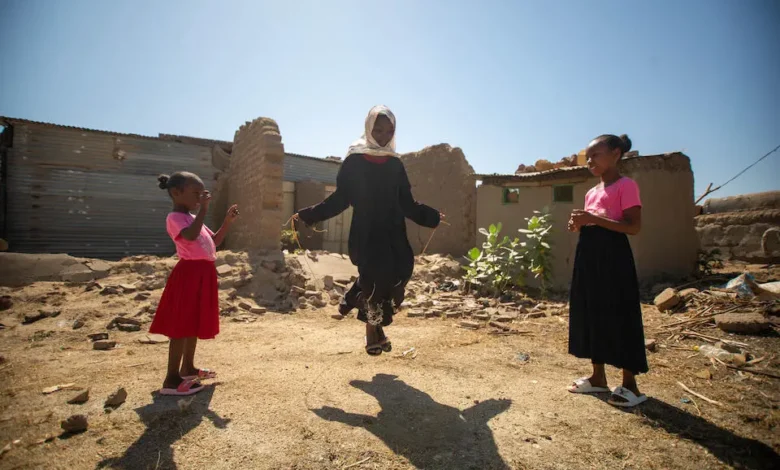“Let Me Be a Child, Not a Wife”: How Climate Change, Conflict, and the Digital Age Are Fueling a New War Against Girls

Source
Introduction
Every three seconds, somewhere in the world, a girl is forced into marriage. By the time you finish reading this sentence, another child has lost her freedom, her education, and her dreams.
Despite decades of progress, child marriage is rising again, driven by a deadly mix of conflict, climate crisis, economic instability, and now, the shadowy reach of the digital world. The year 2025 has brought alarming evidence that this ancient injustice is reinventing itself, taking new, more hidden forms that threaten to undo generations of work for gender equality.
A new report by Plan International, titled “Let Me Be a Child, Not a Wife, Girls’ Experiences of Living Through Child Marriage”, draws on the voices of over 250 girls and young women from 15 countries. Their stories cut across continents but share one painful thread: childhoods interrupted by marriage, violence, and lost potential.
The Hidden Faces of Child Marriage
Globally, 12 million girls are married before their 18th birthday each year. Many of these marriages occur informally, unrecorded by law but binding in culture. The Plan International study exposes how child marriage, though banned in most nations, has moved underground and online, becoming harder to detect, prosecute, or prevent.
Abuse, Inequality, and the Cycle of Control
One of the most harrowing findings of the study is the level of violence endured by these girls. Over 13% of respondents reported physical or sexual abuse, though the real figure is likely much higher due to stigma. Many said violence was normalized, seen as a husband’s right or a wife’s duty to endure.
Almost half (45%) of the girls were married to men five years or more older, with some marrying men twice their age. These vast power imbalances strip girls of autonomy, trapping them in cycles of control and fear.
The consequences are devastating:
- 71.5% of girls interviewed were already mothers, even though pregnancy and childbirth are the leading causes of death for adolescent girls.
- 35% dropped out of school after marriage, and 63% are not in education, employment, or training.
- Many were denied access to contraception or reproductive health care, with husbands controlling both finances and fertility.
The Weight of Culture and Poverty
In nearly every country studied, economic hardship and social pressure were the most common drivers of child marriage. For families living in poverty, marrying off a daughter can seem like protection; from hunger, from shame, from violence. But in truth, it often delivers her into a deeper form of danger.
The report found that 46% of respondents were married off because of family or community pressure. Many cited cultural beliefs that a girl’s worth lies in her obedience, fertility, and ability to marry young.
“Child marriage is not a choice, it’s an act of desperation,” says Dena Allen, Vice President of Plan International Canada. “But desperation doesn’t make it right. It makes it urgent.”
Climate Change
As droughts, floods, and extreme weather devastate crops and livelihoods, families are turning to child marriage as a survival strategy. The climate crisis, far from gender-neutral, is amplifying every existing inequality.
In East Africa, the Sahel, and South Asia, the connection is clear: as food insecurity grows, so does the number of girls forced into early unions. A 2025 UN Spotlight Report found a 28% increase in femicide during heatwaves, and projected that one in every ten cases of intimate partner violence could be linked to climate stress by the end of the century.
In Bolivia’s Chiquitanía region, journalist Miriam Jemio describes how Indigenous women must now walk miles to fetch water, journeys that pull girls out of school and expose them to danger. Across West Africa, Plan’s A Gathering Storm report shows that adolescent girls are being pushed out of classrooms, married early, and burdened with adult responsibilities as families fight to survive climate shocks.
The New Frontier: Digital Grooming and Exploitation
Today’s child marriage crisis is not confined to villages or refugee camps. It’s also unfolding on smartphones. Plan International’s report warns that older men are using social media platforms to prey on vulnerable girls, promising love, safety, or financial stability. These relationships often lead to unregistered, informal unions that evade law enforcement and cut girls off from any form of legal protection.
The Law and Practice
Laws prohibiting child marriage exist yet the practice persists through loopholes that allow parents, judges, or religious leaders to give consent below the legal age. These inconsistencies create a dangerous illusion of progress. A girl’s protection cannot depend on her postcode or her religion. Rights are universal or they are meaningless.
The Gender–Climate–Conflict Nexus
The crisis is especially severe in conflict and climate-affected zones, where poverty, instability, and gender-based violence collide. In regions like Sudan, Yemen, and northern Nigeria, girls are traded for survival, a meal today in exchange for a life tomorrow.
A UN Women 2024 Gender Snapshot projected that by 2050, climate change could push 158 million more women and girls into poverty, with 47.8 million more facing food insecurity than men. Each statistic tells the same story: the forces driving climate change are the same forces fueling gender inequality; exploitation, extraction, and exclusion.
Conclusion
Child marriage is not a relic of the past, it is a mirror of our present failures. It reflects a world that still values girls less than boys, tradition more than justice, and silence over survival. If nothing changes, 10 million more girls will be married by 2030. Ten million childhoods, traded away. Ten million leaders, dreamers, and innovators lost before they ever had a chance.





